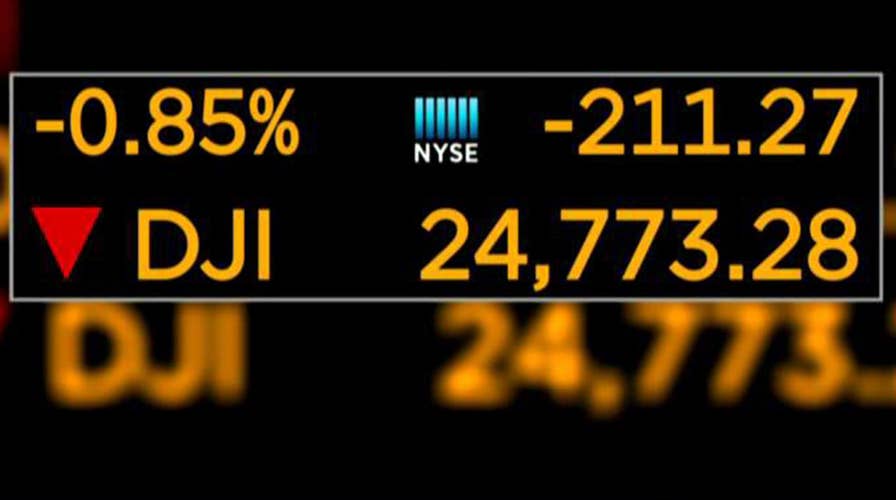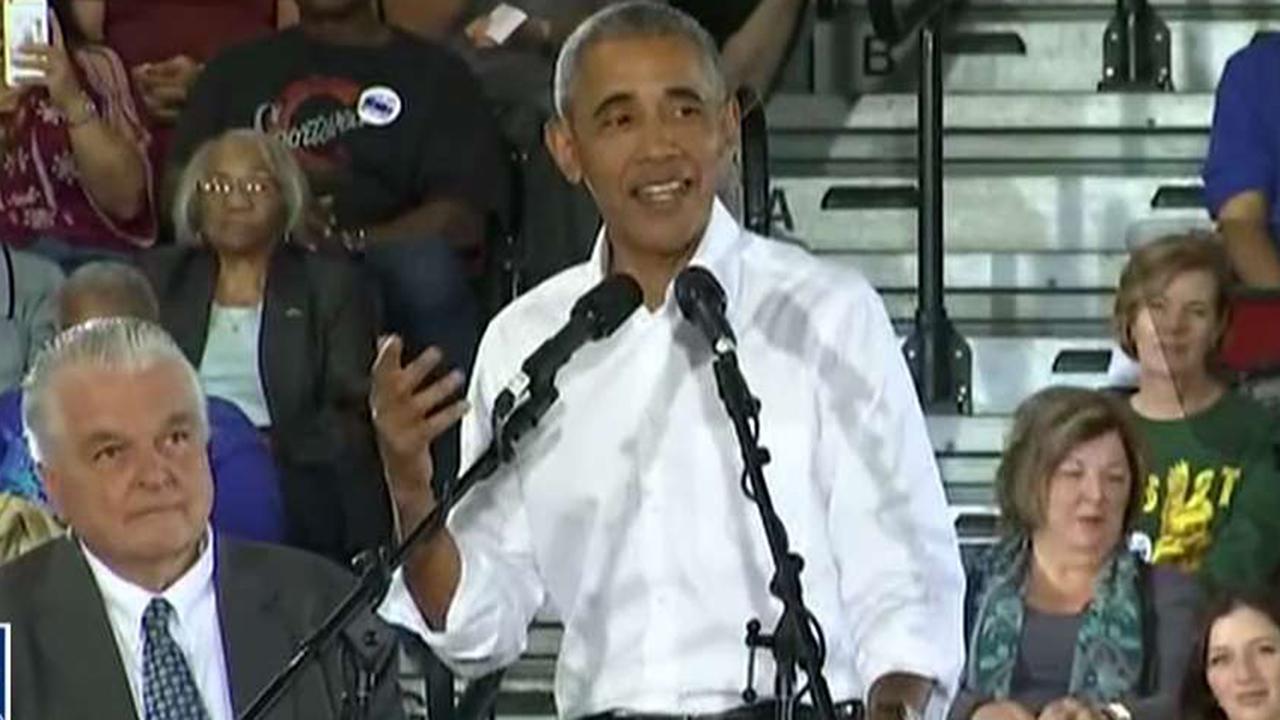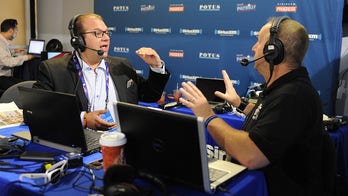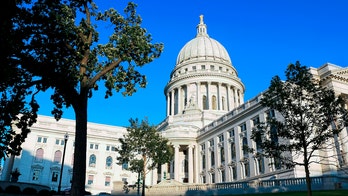US economy grows at 3.5 percent rate in third quarter
Chair of The Council of Economic Advisers Kevin Hassett says it's clear that President Trump's policies are making ordinary Americans better off on 'America's Newsroom.'
The economy is good. Many credit President Trump – but President Obama also tried to take credit last week, saying, “when you hear all this talk about economic miracles right now, remember who started it.”
What’s the reality? To see if the trends changed after Trump, the following graph compares the 716 days since Trump’s election with the exact same time period before it.
The stock market, as measured by the S&P 500, had been roughly flat before Trump’s election, but rose afterward – even after the recent slip.
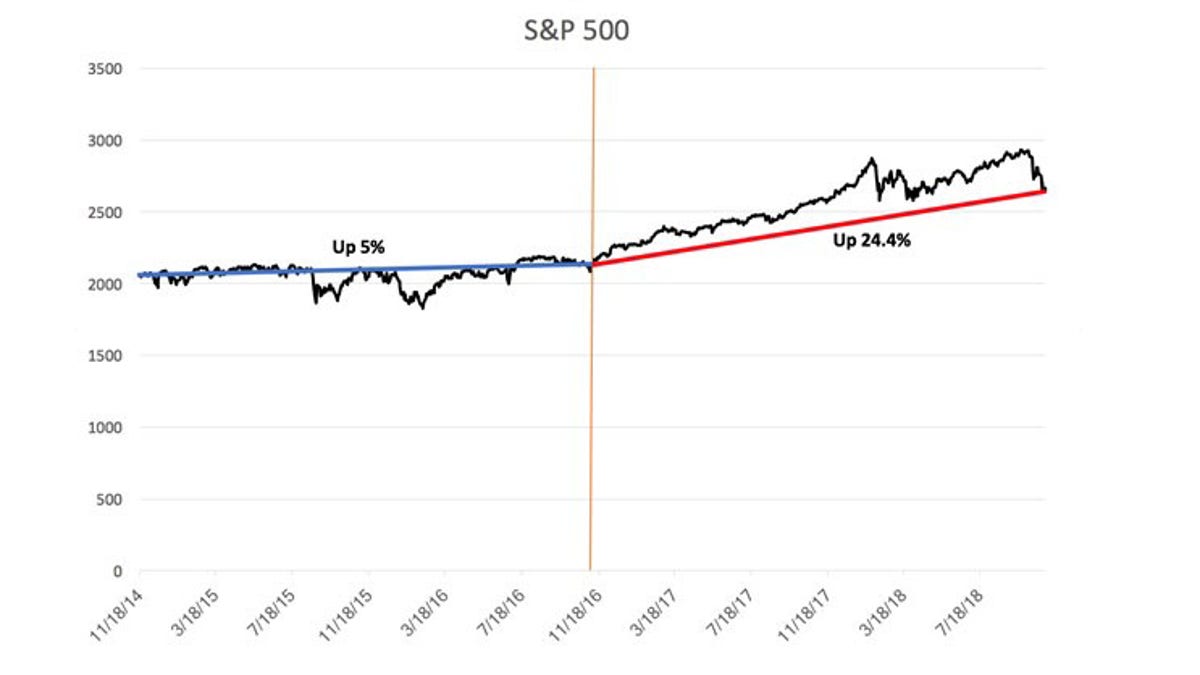
[The black line shows stock prices. The blue line is the trend line for the 716 days before the election (represented by the orange vertical line); the red is the trend line for the 716 days after.]
The graph compares the change since Election Day, rather than Inauguration Day, because markets began reacting to a future Trump Presidency as soon as the election was over.
President Trump argued his case on Twitter Tuesday, tweeting:
“The Stock Market is up massively since the Election, but is now taking a little pause - people want to see what happens with the Midterms. If you want your Stocks to go down, I strongly suggest voting Democrat. They like the Venezuela financial model, High Taxes & Open Borders!”
Asked about the graphs, economist Austan Goolsbee, who advised President Obama’s campaign and chaired Obama’s Council of Economic Advisers, told Fox News: “It’s approaching the longest boom on record and both presidents deserve some credit.”
“President Trump deserves credit for keeping things going and for energizing business and consumer confidence,” Goolsbee said.
“President Obama deserves credit for helping save us from the depression and for handing to President Trump some of the best economic conditions for a new president in a half century,” he added.
Goolsbee also noted that, if one goes all the way back to when Obama took office – in the middle of a recession – the trend under his administration was even more positive.
Consumer Confidence, a measure of how people feel about the economy that is often considered a good indicator of future growth, was also sluggish before the 2016 election but then rose dramatically.
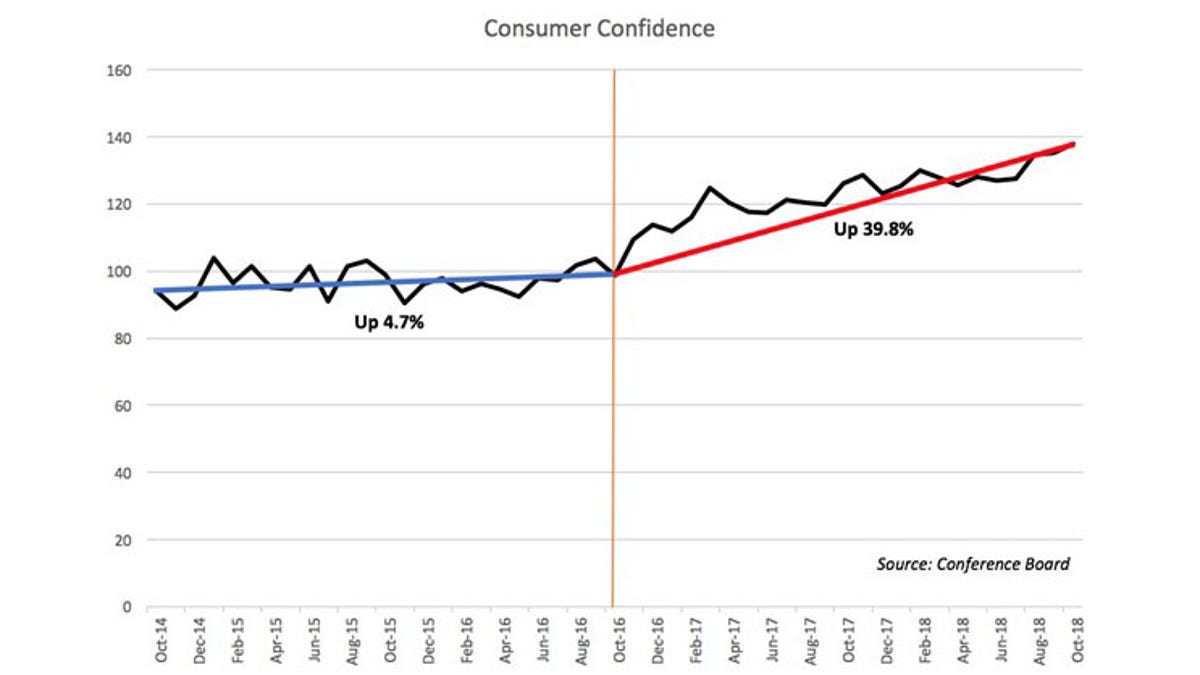
President Trump also bragged about this measure on Twitter Tuesday, writing, “Just out: Consumer Confidence hits highest level since 2000.”
Economist David Henderson, who served on President Reagan’s Council of Economic Advisers, said the graphs reflect negatively on Obama.
“It’s always hard to know what the role of the President is versus other factors. One thing seems clear, though... it has nothing to do with Obama,” Henderson said.
Henderson pointed to quotes from President Obama’s backers before the boom.
“In the fall of 2016, Obama adviser Larry Summers predicted that a Trump election would lead to a recession. That clearly hasn’t happened,” Henderson said.
President Obama himself has been criticized for his rhetoric in 2016. In one speech urging people to vote for Clinton against Trump, Obama slammed Trump for promising to bring back traditional manufacturing jobs that “are just not going to come back” as opposed to new sectors like clean energy.
“When [Trump says] that he's going to bring all these jobs back, well how exactly are you going to do that?” Obama asked. “What magic wand do you have?”
Government data shows that, in the 20 months after Trump’s inauguration, 378,000 manufacturing jobs have been added – eleven times more than were created in the period before Trump’s inauguration (33,000.) GDP grew faster as well.
The unemployment rate also fell faster after Trump became president.
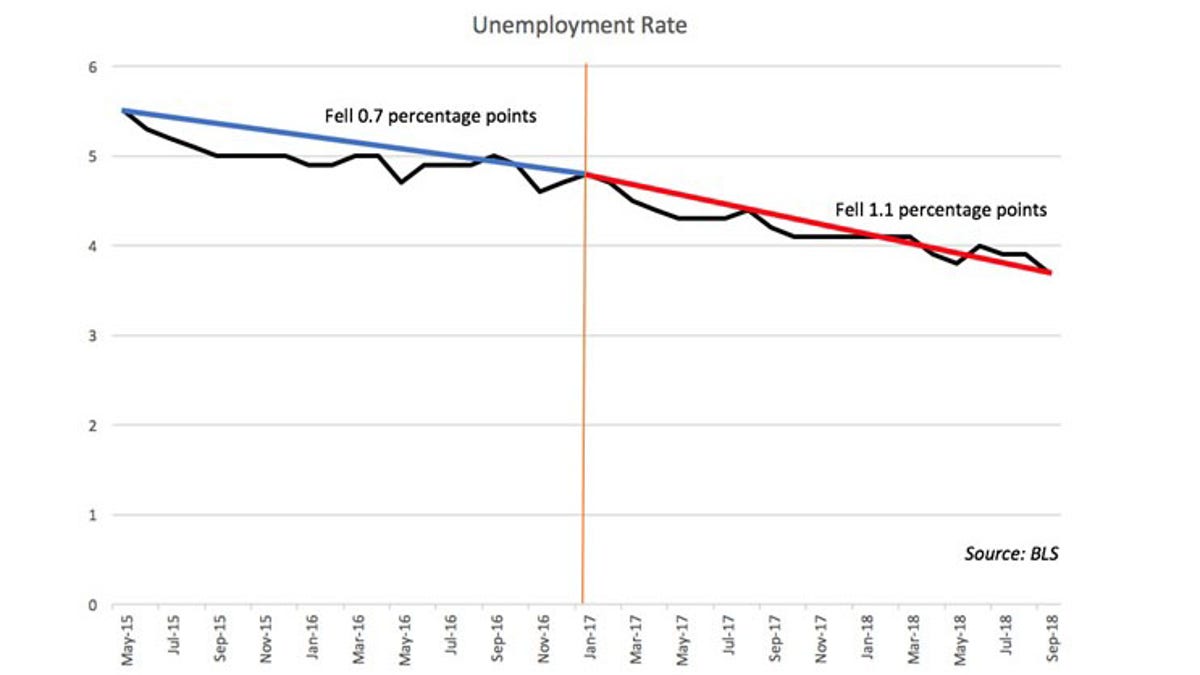
The stock market and consumer confidence graphs are centered around the election because those measures react immediately. Based on advice from Goolsbee, all other graphs and numbers compare before and after Trump’s inauguration, since such measures tend to take time to change.
Goolsbee also noted that the trend line for jobs created is slightly different from unemployment. Some 4.2 million jobs were created in the 20 months before Trump’s inauguration, compared to 3.8 million in the 20 months after.
But Henderson said the statistics reflect positively on Trump’s policies, and that it’s much harder to create jobs when the unemployment rate is already so low.
“Normally the reduction in unemployment slows down as we get closer to full employment. What’s striking is the quick pace at which unemployment has fallen,” Henderson said.
In the 20 months before and after the inauguration, wage growth also continued its upward trend.
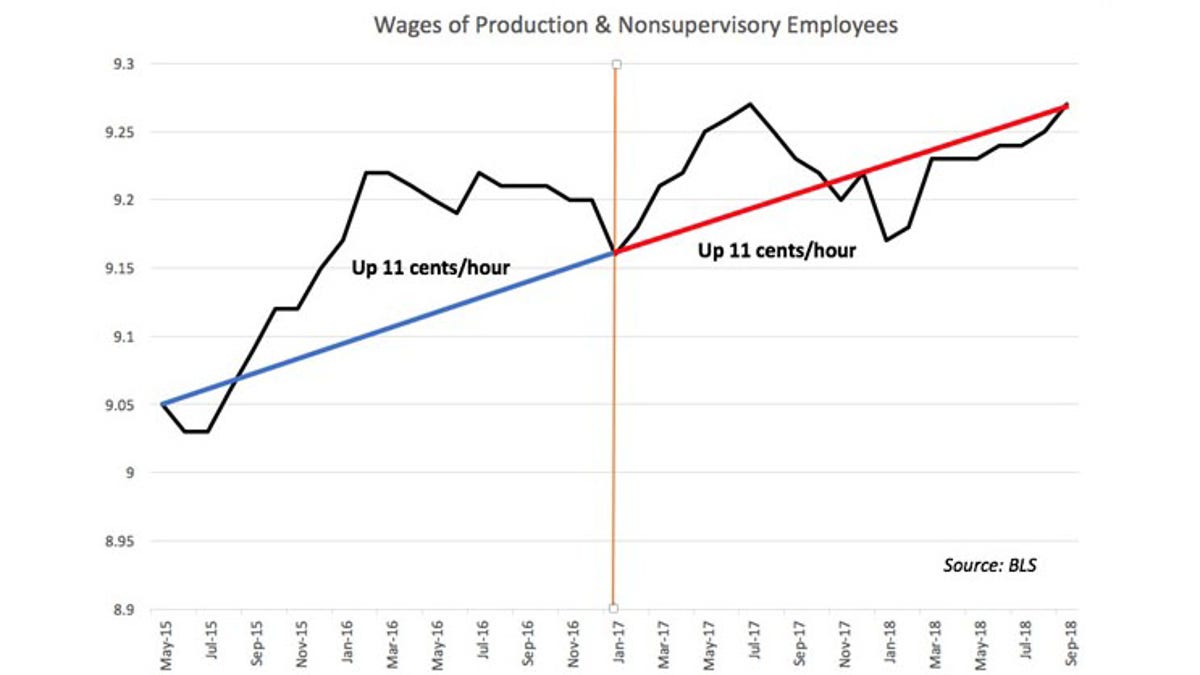
What’s the reason for Trump’s success? Henderson argues that Trump’s tariffs and immigration controls harmed growth, but that they were outweighed by other policies.
“I think there are two factors, and Trump deserves credit for both. One is deregulation and the slowing of new regulation; the other is the tax cut,” Henderson said.
Maxim Lott is Executive Producer of Stossel TV and creator of ElectionBettingOdds.com. He can be reached on Twitter at @MaximLott
